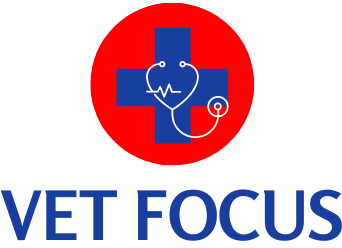Being successful in a demanding curriculum as a veterinary student necessitates a methodical and efficient approach to studying. Creating effective study techniques is crucial for academic achievement due to the wide range of complicated subjects and the real-world requirements of clinical rotations. We will look at tried-and-true study methods designed especially for veterinary students in this blog post. You may improve your comprehension, retention, and application of knowledge in the field of veterinary medicine by putting these ideas into practice.

Following are some of the effective study strategies for veterinary Students:
1. Active Learning: Apply, Engage, and Understand
A potent method for promoting thorough understanding and information retention is active learning. Actively process and apply what you are learning rather than only listening or reading. In your own words, describe ideas to yourself or others. To test your comprehension and increase your knowledge, consider leading group discussions and teaching topics to your classmates.
2. Using visual aids to improve comprehension
Understanding intricate anatomical structures and physiological processes requires the use of visual aids. Use flowcharts, concept maps, and diagrams to illustrate linkages and interconnections. Your visualization abilities can be improved by using online resources, interactive modules, and anatomy apps. Making mnemonics and vivid pictures can help with memory recall.
3. Condensing the Essentials in Comprehensive Study Guides
Consolidating important knowledge from lectures, textbooks, and other sources into thorough study guides is a useful strategy. Condense relevant material into brief notes and summarize key ideas. To organize your information, use headings, subheadings, and bullet points. For improved comprehension, use visual aids such labelled diagrams and color coding.

4. Exam and case study practice will help you apply your knowledge
It is essential for veterinary students to practice for exams and real-world situations. To become comfortable with the format and sorts of questions, solve previous tests and go over sample problems. Apply your knowledge and develop your critical thinking skills by working through case studies. In order to strengthen your grasp of practical applications, look for opportunities to observe and participate in clinical cases.
5. Technology Used Efficiently: Using Digital Resources
Use technology to its full potential to make studying more effective. Use interactive online lessons, virtual simulations, and anatomical applications to enhance learning. Use digital flashcard programs to review and test yourself. Utilize online resources, such as credible veterinary databases and publications, to expand your knowledge of a certain subject.

Utilizing technology, working in study groups, and efficiently managing time are other ways that improve learning. To ensure you fully comprehend the information, keep in mind to constantly revisit it and reinforce your understanding when necessary. You may excel in your veterinary studies and get ready for a rewarding career in veterinary medicine with commitment, planning, and these study techniques.

